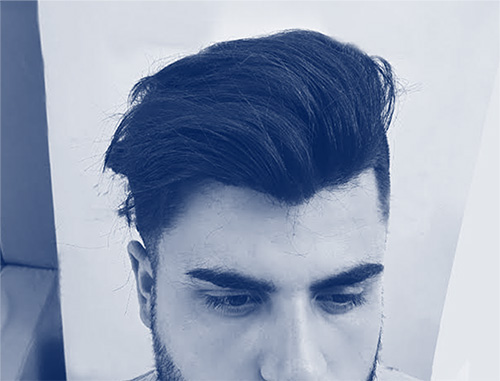Can Hair Transplantation be Performed on the Burned Area?
Treating hair loss due to burns can be a difficult process for both the surgeon and the patient. Because the process in burnt area hair transplantation requires more than one step and therefore it can take several years. The reason is that the treatment may need to be repeated to achieve a sufficient intensity and natural appearance.
Hair, eyebrows, eyelashes, and beard loss can have a negative psychological effect on the self-esteem of the person recovering from the burn. In this article, we describe both surgical and nonsurgical options that can solve these types of burn injuries.
Is Hair Transplantation a Suitable Option for the Burned Area?
There are many people who have burn injuries and scars on the skin. According to the hair transplant procedure to the burned area, if the patient has first or second degree wounds and burns, it can be treated. However, if treatment is not applied to burnt hair within a few months, it may be difficult to perform surgery. However, there are different factors that will determine whether or not a hair transplant can be performed. These;
• Size of the burnt area
• Burn degree
• Rate of scalp damage
 How is Hair Transplant Treatment Performed on Burned Area?
How is Hair Transplant Treatment Performed on Burned Area?
Treatment can be done in two ways: FUE (Follicular Unit Extraction) and FUT (Follicular unit transplantation). Both methods are the same for hair transplantation to the burned area. Treatment is carried out at different stages to check whether the patient is able to respond to the treatment.
There are two stages involving treatment. These;
• In the first stage, low density hair transplantation can be performed to provide growth to the hair follicles.
• If the treatment is effective, doctors will increase the density of the hair within a few years.
In both treatments, healthy hair follicles are taken from the area where hair growth is maximum. Because the nerves that stimulate hair growth in that area are healthy. In this way, the wound can be treated appropriately. The number of grafts required in treatment will vary depending on the patient's condition.
Nonsurgical Options
Hair transplantation to the burnt area may not be a suitable choice for all burn patients or it may not be preferred by everyone. For this reason, non-surgical methods may be preferred in those areas. These;
Cosmetic camouflage - natural scalp dyes, keratin microfibers, eyebrow makeup
- Semi-permanent micro pigmentation tattoo which is especially impressive for the eyebrow area
- Hair prosthesis (partial hair prosthesis or full wigs)
- Hairy adhesive dentures (eyebrows, false eyelashes)
- Scalp prostheses combined with Branemark ear prostheses
These methods can provide long-term camouflage, which can be preferred by patients who are not suitable for hair transplantation in the burnt area and who cannot get healthy hair from the donor area.
Surgical Options
Surgical options can be applied to the burnt area along with hair transplant treatment. These include one or more of the following techniques:
- Serial excision with or without tissue expansion
- Hair-bearing wings with or without tissue expansion
- Hair bearing grafts
- Hair transplant surgery
There is a limit to the density of the hair transplanted in the hair transplant operation. At least three procedures are required to achieve the appearance of normal density. Large scalp areas and beard burn scar alopecia (larger than 80-100 cm2) are common. It is best managed by reducing the size of the defect. The blood circulation in the area is increased.
Hair-bearing full-thickness grafts rarely give successful results. In this method, hair growth does not usually occur in a natural direction.
However, the most effective treatment for hair reconstruction is hair transplantation. Hair transplantation to the burned area is a much more effective method to provide naturalness, especially in eyebrow and eyelash alopecia.
Hair transplantation to the burned area can restore completely natural looking hair lines. Small to medium burn scar can cover areas of alopecia. Apart from this, with beard transplantation, the eyebrows can be restored, as well as the upper eyelashes and other hairy parts of the body, in some cases.
Having your hair transplantation done by specialists in the field for burnt areas is a very important factor in getting the right response to your treatment.